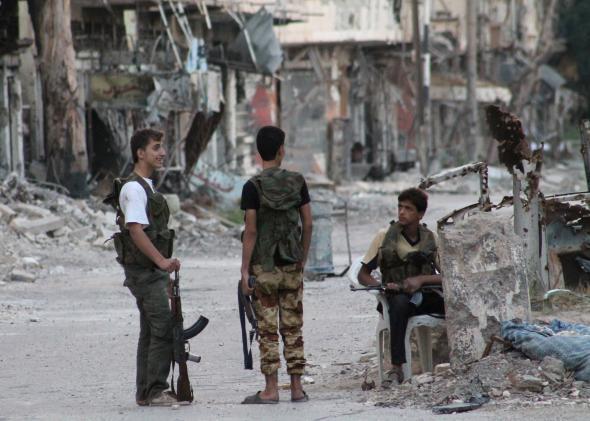The New York Times reports today on the growing concerns among intelligence and counterterrorism officials that foreign fighters recruited into Syrian rebel groups could eventually pose a terrorism threat to their home countries. At least 11,000 foreign fighters are believed to be in Syria.
Most of them are from other Middle Eastern countries though at least 3,000 fighters from western countries and as many as 70 Americans – including one man from Florida believed to have blown himself up in a suicide attack last Sunday – have joined the fight. Most of these foreigners have been drawn to hardline Islamist groups, including the Islamic State of Iraq and Syria, or ISIS, which have more international membership and goals and are very active online. A number of governments in Europe has passed new restrictions aimed at keeping their citizens from traveling to Syria to fight.
Transnational fighters may worry the governments of the countries they come from, but what effect do they have on the movements they join? Kristin Bakke, a lecturer in political science at University College London, argues in a new article for International Security that their impact is mixed. International participants can bring “fighters, weapons, know-how, and access to financial resources” but also may have their own ideas about the movement’s ultimate goals and tactics, ideas which can divide the movement and alienate locals.
As an example, Bakke looks at the insurgency in Chechnya, which “began as a nationalist struggle similar to those of other regions in the “parade of sovereignties” in Russia in the early 1990s.” Over time, however, the movement has transformed into “a broader struggle for an Islamic emirate in the North Caucasus.”
Bakke argues that after the Chechen rebels defeat in the first Chechen War, their drift from nationalism toward pan-Islamism was out of a desire for “access to recruits and funding sources in the Middle East.” Over this period, an estimated 500 to 700 transnational insurgents have fought in Chechnya.
In addition to a new ideological framing, the Chechen insurgents began to adopt new tactics including suicide bombings, attacks outside of Chechnya—most infamously the Moscow theater siege of 2002 and the Beslan school hostage crisis of 2004—and the strict enforcement of Shariah law in the areas they controlled.
The new approach not only alienated many locals, it divided the movement. As Bakke notes, since rebel leader Doku Umarov declared the founding of a Caucasian Emirate, “the Chechen resistance movement has been clearly divided between a nationalist branch, headed by the London-based Akhmed Zakayev, and an Islamist branch, headed by Umarov.”
Amid the growing influence of Middle Eastern Salafist ideology in the movement, prominent rebel leader Akhmad Kadyrov switched sides, eventually becoming the pro-Russian president of Russia in 2003. His son Ramzan has had the job since Akhmad’s assassination in 2004.
The consequences of accepting foreign ideas along with foreign weapons, fighters, and money should have been obvious from the start. But more often than not, Bakke notes, “the temptation of the added resources the outsiders bring might mean that local resistance leaders are willing to go along with the new framing and tactics, trying to make the new ideas at the local context, so as not to lose local support in the process.”
A similar dynamic to Chechnya seems to be present in Syria, where the rebel movement as a whole as well as the hard-line Islamist portion of the movement, are splintering. Fighters from the Islamist Nusra front tend to by Syrian and focused on the goal of overthrowing the Assad regime. ISIS’s membership is more international and it’s more focused on the goals of enforcing Shariah and eventually establishing a larger caliphate.
The internationalization of the rebel movement may be a headache for the governments of the countries the fighters come from, but it seems to be serving the interests of the government they’re fighting.
